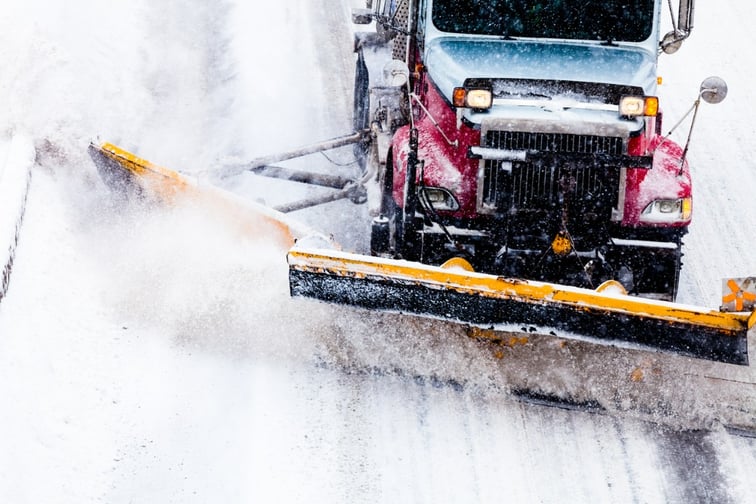

Snow insurance is “a nationwide problem” in Canada. That’s how Lindsey Ross, co-owner of Living Green Landscaping, referred to the soaring liability insurance rates for snow removal businesses in a recent interview with The North Grenville Times.
This has been a winter headline news item for several years, with many industry experts blaming the premium increases on an increase in frequency and severity of slip-and-fall lawsuits, where insurers are on the hook to fund the defence.
Personal injury lawsuits have increased dramatically in recent years, especially in Ontario, where personal injury law firms have been working on a contingency basis, which means that lawyers agree to only receive payment if they win a settlement.
This has resulted in more people taking their chances with personal injury claims, such as pursuing compensation after a slip or fall at an icy or snowy location, and it has given personal injury lawyers more incentive to be aggressive and potentially seek higher damages.
Ontario has tried to remediate the issue by introducing new rules for personal injury lawyer contingency fee arrangements in July 2021. The province also passed new legislation in January, Bill 118, which cuts the amount of time that people have to file a personal injury claim from two-years to 60 days.
However, even if Bill 118 is successful in stemming the tsunami of personal injury claims being filed in the highly populated province, it will take some time for insurers to realize an impact and potentially readjust liability premiums accordingly.
Soaring insurance rates have not been isolated to liability insurance alone. According to Kevin Neiles, president of Western Canada & chief markets officer at Gallagher, commercial insurance rates have been under “tremendous pressure” since 2019, and while 2021 did see some rate stabilization, certain lines of business remain very challenging.
“On the casualty side, we’ve seen some fairly dramatic [rate] increases, but it really is more dependent on the class of business than anything else,” said Neiles. “For some of the high-risk sectors such as host liquor, landscaping, snow removal contractors, and roofing contractors, [rate] increases and lack of appetite [among insurance carriers] are creating challenges.”
Much of this high-risk business, including liability coverage for snow removal contractors, is typically placed by managing general agents (MGAs). However, with the increased frequency and severity of losses, even MGAs that have long serviced these sectors are finding it more difficult to renew their capacity, both in the London marketplace and domestically.
That’s because there’s been a huge focus in Lloyd’s in recent years on profitability and the disposal of loss-making lines. As James Stevenson, managing director of HW Kaufmann Group International, put it: “Every placement has definitely got a different story [but] loss-making placement have been severely punished. The common narrative is definitely: everyone is becoming super selective, and capacity is tight.”
Neiles added: “What was interesting in 2021, is that we were seeing an average of about 10% premium increases through the last four quarters. That is in spite of the fact that the exposure, in a lot of business, has been down considerably because of pandemic restrictions. So, in reality, the [rate] increases relative to the exposure are considerably higher.
“It will be interesting to see, as businesses start to ramp up to their pre-pandemic levels of productivity, [if] insurers start pushing for larger increases even though we did not see the decreases for the reduced exposure during the pandemic. These will certainly be interesting conversations with our insurer partners, and we’ll definitely be working hard to limit the increases for our clients.”
Rate increases and hard market conditions have also rolled over into the umbrella and excess liability space, which has seen a reduction of insurers and available capacity.
“Excess liability and umbrella layers are having to attach, generally speaking, to lower primary layers, which is impacting the pricing,” said Neiles. “Where umbrella insurers are attaching at lower limits, we continue to expect to see these 15% or so premium increases.
“However, as we move into 2022, because of the fact that we’ve already gone through this attaching to lower limits [in primary general liability], hopefully there may be lower rate increases as a result of that, because I don’t expect that the primary limits are going to go down any further.”
Denis Brady, president at Burns & Wilcox Brokerage, said he expects the excess liability market to remain hard in 2022 – even for established commercial contractors with great loss experience and strong risk management practices.
“Everybody want[s] rate increases,” he said. “If you’re working on an account with some tough exposure and adverse loss experience, it’s a challenge out there, and I don’t anticipate that changing.”
